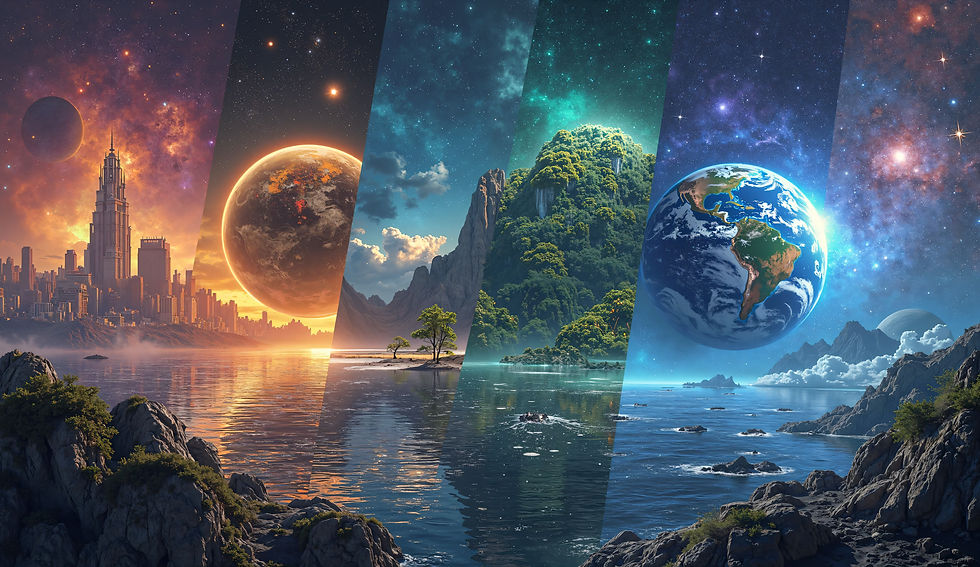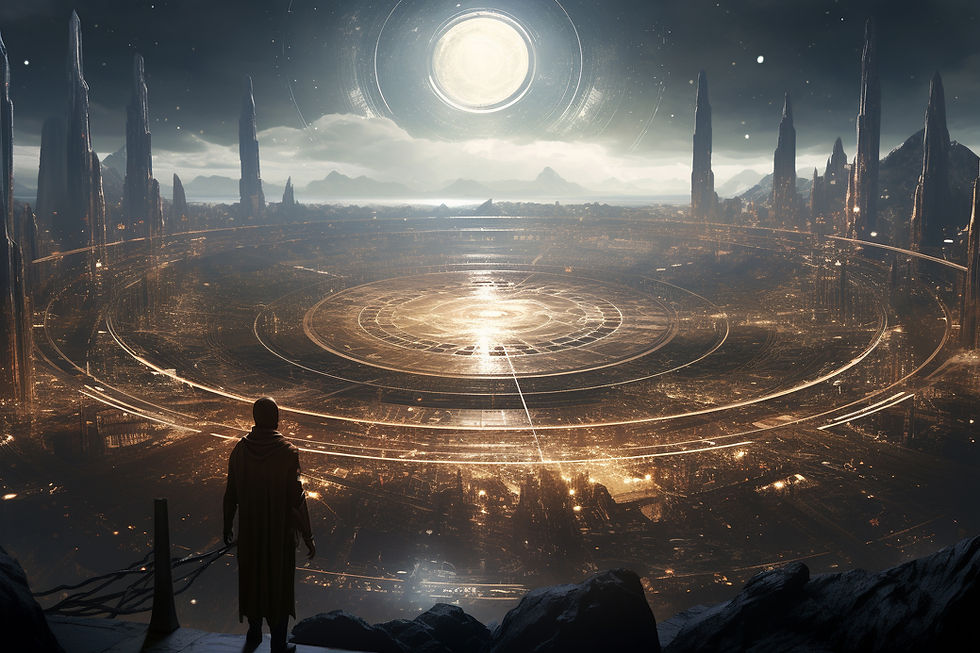Parallel Universes: Is There Really More Than One Reality?
- Cristiano França Ferreira
- Oct 6
- 3 min read

Parallel Universes: Is There Really More Than One Reality?
The idea of parallel universes has always fueled the collective imagination—from science fiction novels to philosophical debates. But what about science? Does modern physics truly consider that universes other than our own might exist?
The answer is: yes, but with varying levels of speculation and support , depending on the theory in question. In this article, we'll explore what parallel universes are in physics, which theories they appear in, and to what extent they are plausible ideas or just mathematical extrapolations.
What Are Parallel Universes?

In the simplest definition, parallel universes would be realities distinct from ours , with their own physical laws or alternative histories, which exist simultaneously with our observable universe.
The idea arises naturally in various areas of theoretical physics - not out of a desire for fantasy, but as a consequence of quantum equations and phenomena .
The 4 Levels of Parallel Universes (Max Tegmark)
Swedish physicist Max Tegmark of MIT has proposed a clear classification for the types of multiverses:
Level I - Infinite Universe
If space is infinite, then everything possible within the laws of physics repeats itself somewhere. There may be "copies" of you living very similar stories—just very far away.
It's the same universe, but with distant variations in space.
Level II – Universes with Different Physical Laws
Predicted by theories such as cosmic inflation , where bubbles of universe form in a larger “soup,” each with distinct physical laws and constants .
Our universe would be just a bubble among infinite possibilities.

Level III – Many Worlds Interpretation (Everett)
This is where quantum mechanics comes in. According to Hugh Everett, the wave function doesn't collapse : it unfolds, creating a new universe for each possibility .
Did you have coffee or tea today? In another universe, you chose otherwise.
Level IV – Mathematical Multiverse
More speculatively, it suggests that all possible mathematical structures exist as real universes . It is not widely accepted, but it intrigues philosophers and mathematicians.
Are Parallel Universes Provable?
The major criticism of these ideas is the lack of direct empirical evidence . We cannot (yet) access other universes to observe or test them. However, some mathematical models and cosmological data are consistent with the idea , especially those at Levels I and II.
One example is the theory of eternal inflation , formulated by Alan Guth and expanded by Andrei Linde , which predicts the creation of multiple universes in an “inflationary multiverse”.
Curiosity: The Mandela Effect and Multiverses

In popular culture, the concept of parallel universes is often associated with the so-called Mandela Effect — when large numbers of people “remember” events that apparently never happened.
While there is no scientific evidence to support this as proof of alternate realities, the phenomenon shows how the idea of multiple realities resonates deeply with the collective unconscious.
Classic examples:
“Luke, I am your father” (never said that way in Star Wars),
The name “Monopoly Man” with a monocle (never had one),
The death of Nelson Mandela in the 1980s (when he died in 2013).
Multiverse and Quantum Computing
Interestingly, the many-worlds interpretation is one of the theoretical bases that support the functioning of quantum computing : each qubit can be in superposition, and the result of the computation would be influenced by all possible universes .
This idea is still metaphorical, but it inspires the design of algorithms that take advantage of superposition and entanglement to generate responses more efficiently.
Final Reflection: How Many Versions of Ourselves Are There?

Science hasn't proven that parallel universes exist—but it hasn't ruled them out either. And the most impressive thing is that these ideas didn't emerge from fiction, but from serious equations and highly respected researchers.
“Reality can be greater than what we can observe—and perhaps, than what we can imagine.” – Max Tegmark
Thinking about parallel universes is an invitation to scientific humility. It's recognizing that our universe may be just one among many—and that our current knowledge is merely a glimmer in the whole.



Comments